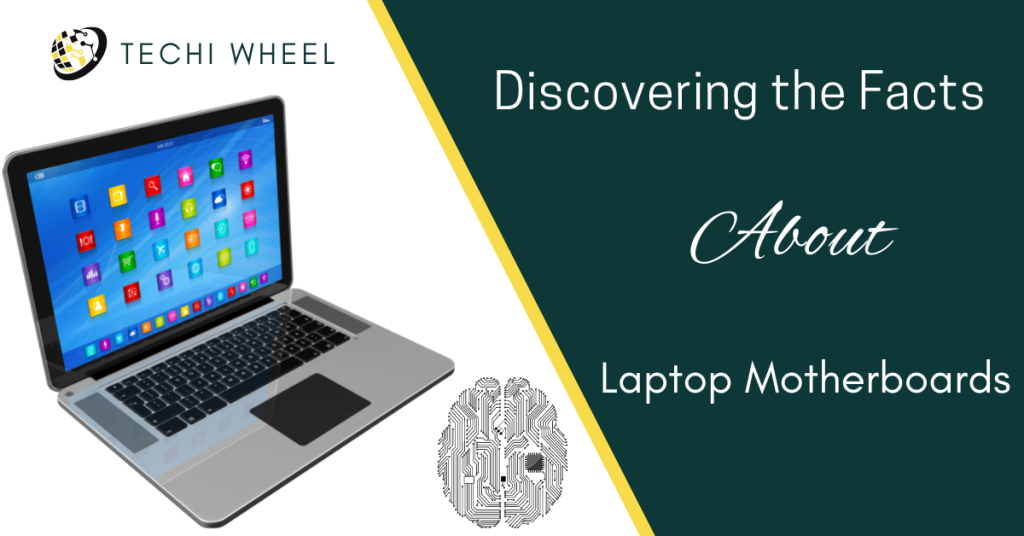Uncover the truth about laptop motherboards with our comprehensive guide. Learn about their various components, functions, and sizes, and find out what is true about them. Explore common issues, maintenance tips, and causes of failure. Get informed about laptop motherboards today.

Laptop motherboards are crucial components that allow the laptop to function correctly. As technology continues to advance, laptops have become more compact and portable, leading to a more intricate design for motherboards. In this article, we will explore the statement that is true of laptop motherboards, common issues, maintenance, and upgrading tips, and frequently asked questions.
In this article, we will be discussing which statement is true of laptop motherboards. We will also be exploring the different types of laptop motherboards, the various components of laptop motherboards, common issues that arise with laptop motherboards, as well as how to maintain and upgrade them.
Table of Contents
Statement that is True of Laptop Motherboards
So, which statement is true of laptop motherboards? The answer is that laptop motherboards come in different sizes and have various components that enable them to function correctly. These components include the processor, RAM, hard drive, graphics card, and other essential elements. The size of the motherboard varies based on the laptop’s form factor, which can be a standard size or a smaller size for ultraportable laptops.
It is essential to understand the various components of laptop motherboards and their functions, as it can help you diagnose and fix issues with your laptop. For example, if your laptop is not turning on, it could be due to a faulty power connector or a failed chipset. Similarly, if your laptop is running slow, it could be due to a lack of RAM, which can be fixed by upgrading the RAM.
Types of Laptop Motherboards
There are various types of laptop motherboards, including Advanced Technology (AT), Advanced Technology Extended (ATX), Mini-ITX, and Micro-ATX.
AT motherboards were popular in the late 1980s and early 1990s, but they have since become obsolete. They were replaced by the ATX motherboard, which features a universal I/O panel, making it easier to add and remove components.
Mini-ITX motherboards are smaller than ATX motherboards and are typically used in compact, low-power systems. They are popular for use in small form factor (SFF) PCs, home theater systems, and car computers.
Micro-ATX motherboards are similar in size to ATX motherboards, but with fewer expansion slots. They are commonly used in small PCs or for budget builds.
Components of Laptop Motherboards
As you gain a deeper understanding of laptop motherboards, you will be able to make informed decisions when it comes to troubleshooting, upgrading, or replacing them.
The motherboard is a complex component with various essential parts that enable it to function correctly. The following are some of the main components found on a laptop motherboard:
CPU Socket: This is where the Central Processing Unit (CPU) is connected. The CPU is the brain of the laptop and is responsible for executing instructions.
RAM Slots: Random Access Memory (RAM) is where the laptop stores temporary data, such as open applications and running processes. The number of RAM slots on a motherboard determines how much RAM can be installed in the laptop.
Expansion Slots: These are used to add additional hardware components to the laptop, such as a graphics card or sound card.
Power Connectors: These connectors provide power to the motherboard and other components.
Chipsets: Chipsets are responsible for connecting the various components on the motherboard and managing data flow.
Common Issues with Laptop Motherboards
Laptop motherboards are subject to various issues that can cause them to malfunction. One of the most common issues is overheating due to insufficient cooling in the laptop’s compact design. Overheating can cause the motherboard to fail and other components to malfunction. Another common issue is power surges, which can occur when the laptop is not protected by a surge protector, causing damage to the motherboard and other components.
Physical damage is another common cause of laptop motherboard failure. Dropping the laptop or mishandling it can result in cracks or other damage to the motherboard, leading to malfunction. Liquid spills are also a common cause of motherboard failure, as spilled liquid can damage the components and cause a short circuit.
Maintenance and Upgrading Tips
Maintaining and upgrading the laptop’s components can improve its performance and extend its lifespan. It is essential to keep the laptop clean and free from dust to prevent overheating. Using a cooling pad can also help regulate the laptop’s temperature. Overcharging the battery can cause it to overheat and damage the motherboard, so it is essential to avoid overcharging.
Upgrading the laptop’s components such as RAM or the hard drive can also boost performance. However, it is crucial to ensure that the new components are compatible with the motherboard to prevent damage.
Conclusion
In conclusion, laptop motherboards are the backbone of any laptop computer, and they play a vital role in ensuring its proper functioning. It is important to understand the various components and form factors of laptop motherboards, as well as how to properly maintain and troubleshoot any issues that may arise.
It is also important to note that laptop motherboards can fail due to a variety of reasons, including overheating, physical damage, and electrical problems. However, with proper maintenance and care, the lifespan of a laptop motherboard can be extended, and the likelihood of failure can be minimized.
Overall, understanding the true statements about laptop motherboards is essential for anyone who uses a laptop computer, whether for personal or professional use. By being aware of the various components, form factors, and potential issues associated with laptop motherboards, users can make informed decisions about upgrading, maintaining, and troubleshooting their devices to ensure their longevity and optimal performance.
Frequently Asked Questions
Does a Laptop Motherboard Contain Data?
A laptop motherboard does not contain data, but some of the components connected to it, such as the hard drive and RAM, do contain data. The motherboard’s primary function is to connect the various hardware components and enable them to communicate with each other.
However, it is worth noting that some of the components connected to the motherboard, such as the hard drive and RAM, do contain data. Therefore, it is essential to back up your data regularly to prevent data loss in case of hardware failure.
What Causes a Laptop Motherboard to Fail?
Common causes of laptop motherboard failure include overheating, power surges, physical damage, and liquid spills. Overheating is a common issue as laptops are designed to be compact and portable, which can lead to insufficient cooling. Power surges can also damage the motherboard and other components if the laptop is not protected by a surge protector.
Physical damage can occur due to mishandling or dropping the laptop, which can result in cracks or other damage to the motherboard. Liquid spills are another common cause of laptop motherboard failure, as spilled liquid can damage the components and cause a short circuit.


